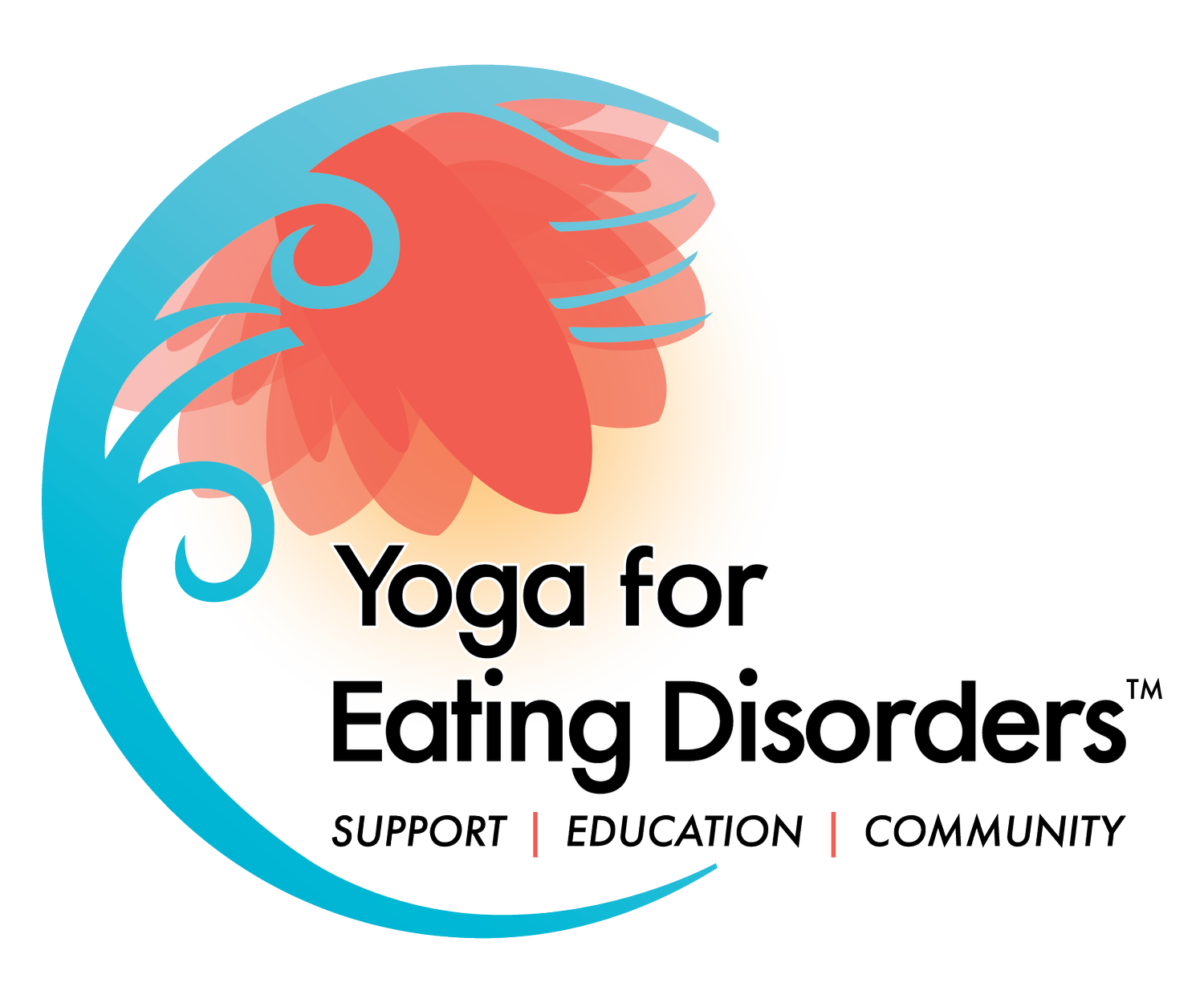Mirror Image - Addressing How We See the World
By Niya Bajaj
This blog is part of a special 12-month series titled, “Inclusive Eating Disorder Recovery: How Yoga Therapy Can Help” written by Niya Bajaj. Through her blogs and related social media posts, Niya will explore how we can use the ethics of Yoga, personal practice, movement, breath, focused attention, and meditation to create recovery spaces that are inclusive and reflective of diverse lived experience. Join in the conversation on Instagram by following along @yogaforeatingdisorders and @holisitcyogatherapist.
Image (noun): a mental picture or impression of something or a mental conception held in common by members of a group and symbolic of a basic attitude and orientation.
In last month’s blog post, we explored how eating disorders don’t discriminate. However, systematically excluded populations often experience worse recovery outcomes. This is due to a lack of representation, and understanding in research and care provision. This month we will explore how evidence based practises from yoga therapy support a more inclusive recovery from eating disorders.
How Biases Shape Us
The way we perceive ourselves is influenced by external, or implicit bias. These biases influence what we see in the mirror, and in the world around us. The difference between the two forms of bias is that explicit biases are intentional and controllable. Implicit biases are unconsciously held and shaped by the culture we exist in. Because of their implicit nature, they are harder to identify, and to change. But it’s not impossible.
Yoga therapy provides us with the tools to do so, through the niyamas (nee-yuh-muhs) - the second limb of yoga. These recommendations for healthy living complement that yamas (yuh-muhs). Together they make up the core yogic philosophical approach to living in a healthy relationship with body, breath, mind and your environment. They are useful tools to examine our biases, how they shape the image we see in the mirror, and how we perceive the world.
Culture and Body Image
The culture we are raised in provides the lens that determines what is beautiful and influences our body image. Research considering body image tends to focus on weight, or shape. Cultural factors may dictate that skin tone, feature size and hair texture play a more significant role. Each culture tends to have a different perception of, and relationship, with the body and what is considered beautiful. This can change over time.
Research indicates that people from cultures that prize individualism and consumption tend to have higher levels of body dissatisfaction. This may be the impact of being in a poor relationship with body, breath and mind due to media and social pressure to conform to an “ideal” body type. People from more relational and communal cultures may not experience the same pressure, unless they are introduced to a new culture that does, and they internalise new body image ideals as they acculturate.
Applying the Niyamas to Heal Body Dissatisfaction
Svādhyāya
The niyama of svādhyāya (svahd-YAH-yah) or self-study supported by a culturally appropriate philosophical or sacred text can help clear this “ideal” lens and support a healthier body image. The practice is a reflective one that includes engaging with the primary text - whether it’s the yoga sutras, the Quran, the bible, or that of your favourite philosopher.
These texts often include language around the intrinsic value of the body, and of the self beyond the physical form. The practice includes deliberately exploring how personally useful that information is and how it can influence the relationship you have with yourself.
The philosophic principles may be something you incorporate into a mindfulness practice that you use throughout your day, a journaling exercise, or a practice where you deliberately reflect in a focused meditation practice to reinforce the relevance of the concepts and ideas. These forms of focused practice will help develop new habits and neural pathways over time, ultimately addressing the implicit bias and supporting a more inclusive perception of personal body image.
Śaucha
Another way to explore and address implicitly held standards, and associated practises of cultural ideals of beauty and appropriateness is through the niyama of Śaucha (shau-cha). This is usually translated as cleanliness. While it applies to physical practices like bathing and tongue scraping, it also applies to speech and language. This includes taking responsibility for all of your words,including the ones you say to yourself. It also includes paying attention to your intention behind the words, and what the effect is on you, and your environment.
A Śaucha practice could look like a deliberate pause every time you think or say something about your body to examine your intention, and the effect that it has. It might include identifying a collection of positive visualisations and affirmations to use as a counter or replacement to negative thoughts and expressions. When used over time, they will support the development of new habits and neural pathways and will change how you see yourself and the world.
Iśvarapranidhāna
Cultural tradition can help, or hurt how we see ourselves and others. This includes defining what is beautiful, valuable and desirable. If you find yourself stuck in a perception that you know is not serving you, or stressed by the struggle to address your implicit bias, the niyama of īśvarapranidhāna (Ish-va-ra-pra-nid-hah-na) can support your healing practice.
Classically īśvarapranidhāna is defined as surrendering to a universal power greater than yourself. You might call this Source-energy, Life Itself, Oneness, Love, Light, Buddha, Nature, Emptiness, Spirit, or the name of a religious deity. How you perceive it does not matter. To explore the practice, choose something that you feel stuck or stressed out by. Ask that universal force to replace that sense of discomfort with one of ease and softness. You might also explore releasing your need to fix, solve, or control the situation so that you can find a sense of relaxation. Once relaxed, you might find that you have space to explore changing your perception.
Our perception of what is appropriate, beautiful and desirable has been significantly impacted by colonisation. Western colonialism has embedded eurocentric beauty standards into global consciousness and continues to do so, such that current beauty standards in North America generally appear in African and Asian media in as little as a year. Light hair, skin and eyes were sold as manifestations of divine light in the 15th century and the idea that being white or white adjacent meant better economic and social access continues, along with associated class connotations.
White supremacy and capitalist structures continue to profit from these standards, particularly through empowerment marketing that preys on these deeply rooted culturally influenced insecurities - as though buying products can increase how empowered you are.
Santosa
A practice that you might explore to deepen your empowerment is the niyama of santosa (sun-tosh-ah). Defined as contentment, acceptance, or optimism this practice might look like acknowledging what you are avoiding, and being honest with yourself about it. This honesty creates the space to explore the roots of that avoidance, and then to either remove them, or to graft new, supportive ideas on top of them to create contentment and empowered action.
That empowered action is one way to start to address the harm caused by the globalisation of western cultural ideals - harm that includes the negative health effects of skin “whitening” creams along with the disordered eating patterns, including the rise in orthorexia driven by the increased push from diet and fitness culture in the media.
Tapas
Sustaining the action necessary to address implicit bias and create a more inclusive experience for ourselves and others requires the niyama of tapas (tuh-pus). Classically defined as discipline or persistence, this practice provides the grounding for the daily rituals that (re)build neural pathways and (re)establish healthier relationships with your body, breath and mind. Regular, committed practice of the other niyamas will amplify the impacts of the work, and will create space for you to model them for others.
Call to Action
If you are a researcher in this space, how can you use the niyamas to deliberately address your bias and make your research more inclusive? What could you do to explore the nuances around culturally specific beauty standards? How might you decolonize your approach when working with systemically excluded colleagues, or change how you work with communities? How might your work contribute to the decolonization of the exploration or validation of cultural beauty standards?
If you are a care provider, how will you use the niyamas to challenge your biases so that you can better provide culturally appropriate care while recognizing and helping repair the harm that may be culturally caused? How could you use these practises to support your colleagues by sharing your learnings and resources to model how it can be done and encourage them to do something similar.
If you are seeking care for yourself, or someone else, your practice of the niyamas might help you safely explore and reshape your perception based on an understanding of how colonisation and globalisation have shaped your cultural views. You might explore how you can start to shift your body image bias while seeking care. You might also share information with care providers, or participate in research to help build an evidence base.
If you are already acting on the niyamas to address your implicit bias and increase inclusion, we would love to learn more about what you are up to. Please share how it is going so far, what has worked well, and what you might set aside. Tell us in the comments, or message us on instagram at https://www.instagram.com/holisticyogatherapist/ and https://www.instagram.com/yogaforeatingdisorders/
Resources to Support Your Exploration
Niya Bajaj is an award-winning mentor, philanthropist and yoga therapist who has spent her career helping high performing humans achieve their goals by working with you as a whole person, taking the experience of body, breath and mind into account to build healthier systems and structures. As a queer woman of colour she brings her interdisciplinary insights to her research, practice and the organizations she leads and advises. Connect with Niya at https://holisticyogatherapy.ca/ or on Instagram: https://www.instagram.com/holisticyogatherapist/


